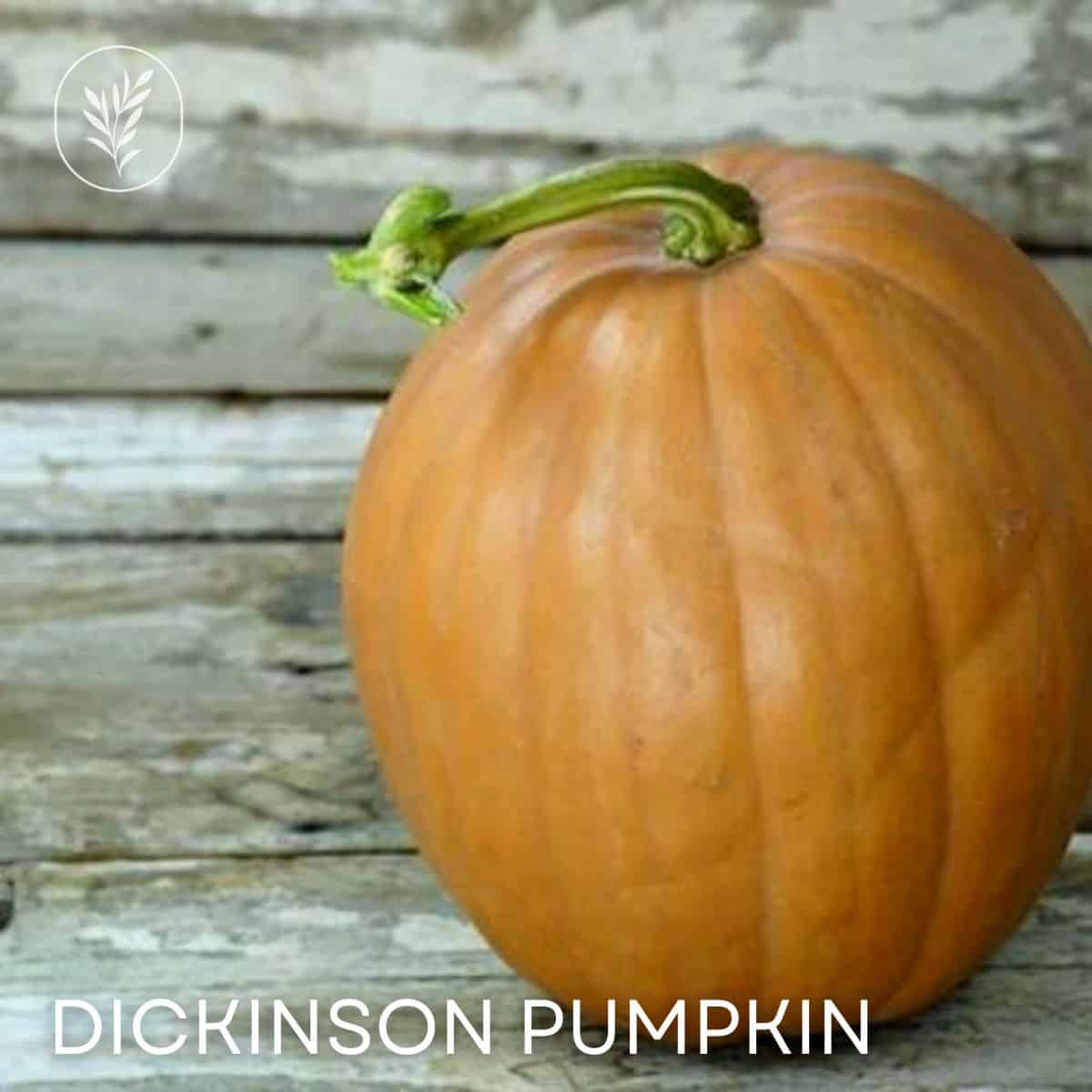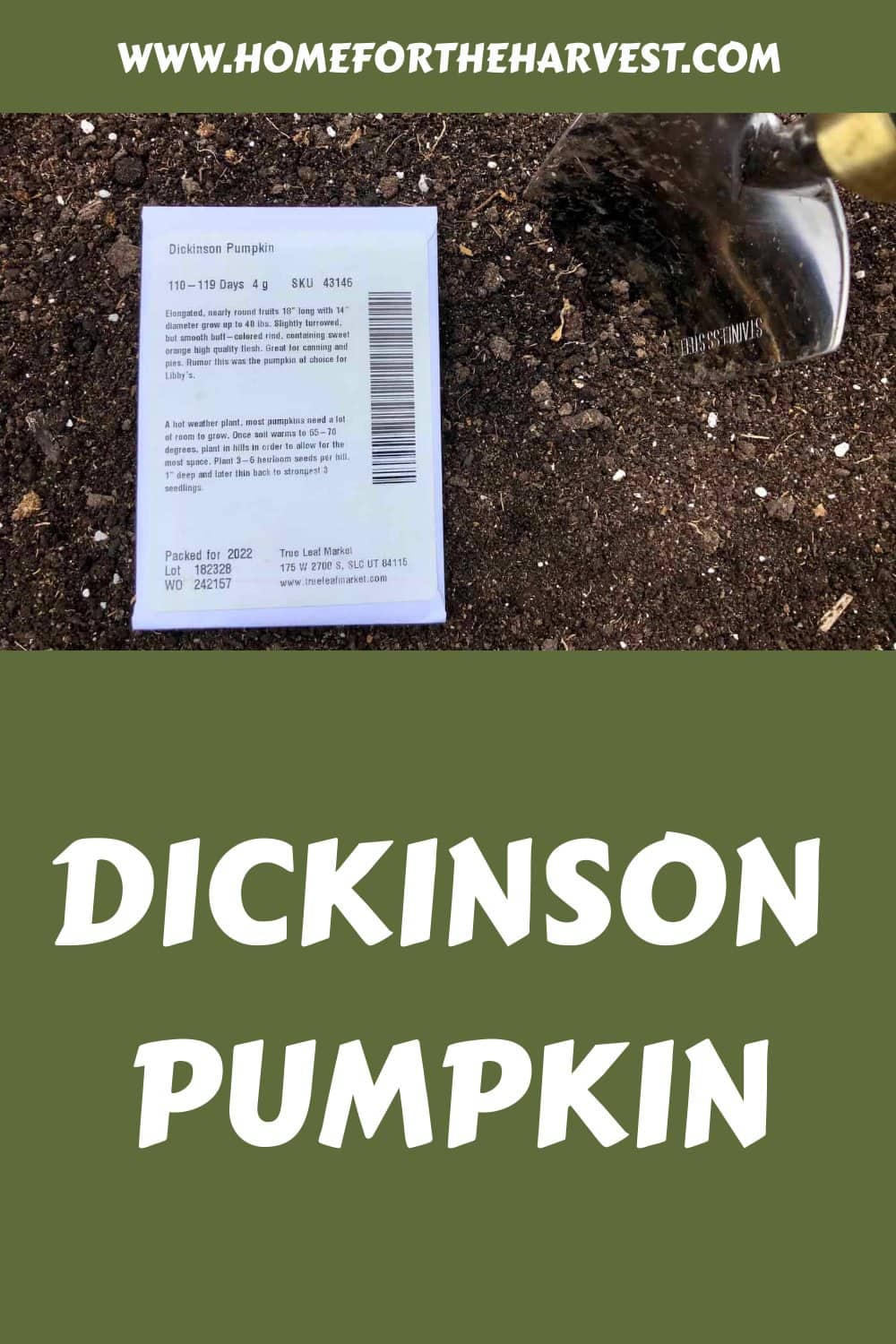The Dickinson pumpkin is an elongated American heirloom winter squash with dense flesh. These pumpkins have a tan-colored rind with slight ribbing and weigh 10-14 pounds each. They are commonly grown in Illinois, as the plants thrive in temperatures around 75-80 degrees Fahrenheit. They are well known as an excellent variety for making pumpkin pie.
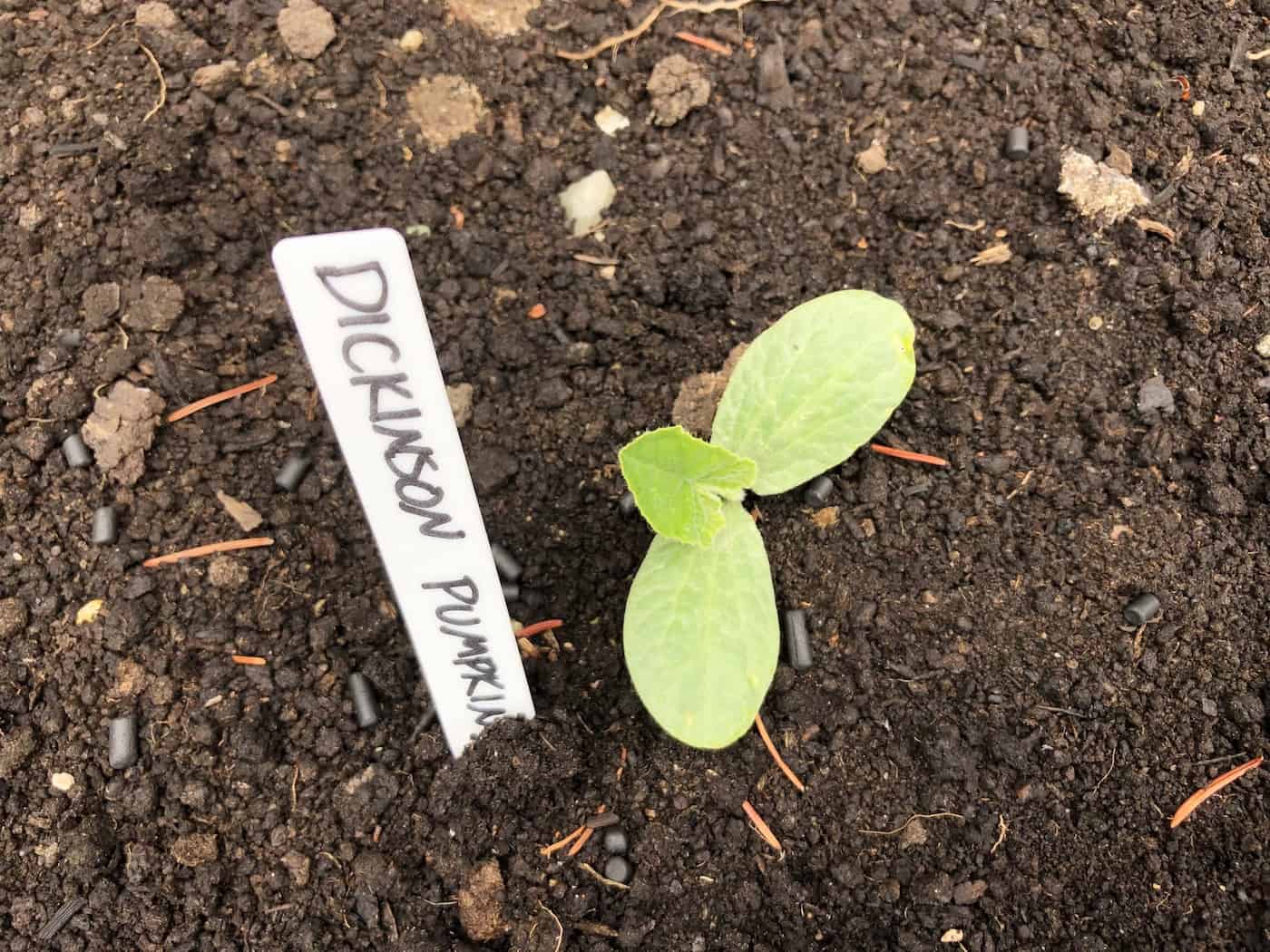
Dickinson pumpkin basics
The Dickinson pumpkin (Cucurbita moschata ‘Dickinson’) was brought from Kentucky to Illinois by Elijah Dickinson in 1835. The variety became popular due to its excellent cooking qualities and was named in his honor. Dickinson pumpkins are also called Dickinson squashes, as historically, the word “pumpkin” was a non-botanical term used casually to refer to rounded, melon-shaped squashes.
These pumpkins are still sought after by bakers hoping to make a truly American classic pumpkin pie. Many high-quality commercial pumpkin pie fillings use Dickinson pumpkins (like Libby’s Canned Pumpkin and E.D. Smith’s Pure Pumpkin).
This cultivar, ‘Dickinson’, is of the species Cucurbita moschata, which is typically better for hot and humid climates when compared to other popular pumpkins of the species Cucurbita maxima or Cucurbita pepo. Some popular ‘Dickinson’ relatives that are also of the species Cucurbita moschata include the butternut squash, Seminole pumpkin, Long Island Cheese pumpkin, and the highly ornamental Musquée de Provence (Fairytale pumpkin).
“Grown by Elijah Dickinson, born in 1795, he brought the Dickinson pumpkin seeds to Eureka, Ill., from Kentucky in 1835. He didn’t know he was carrying with him the seeds of a million dollar pie pumpkin and one of the most valuable heirlooms in history. It is the backbone of the pie industry even today.”
Dickinson Pumpkin, Baker Creek Heirloom Seeds
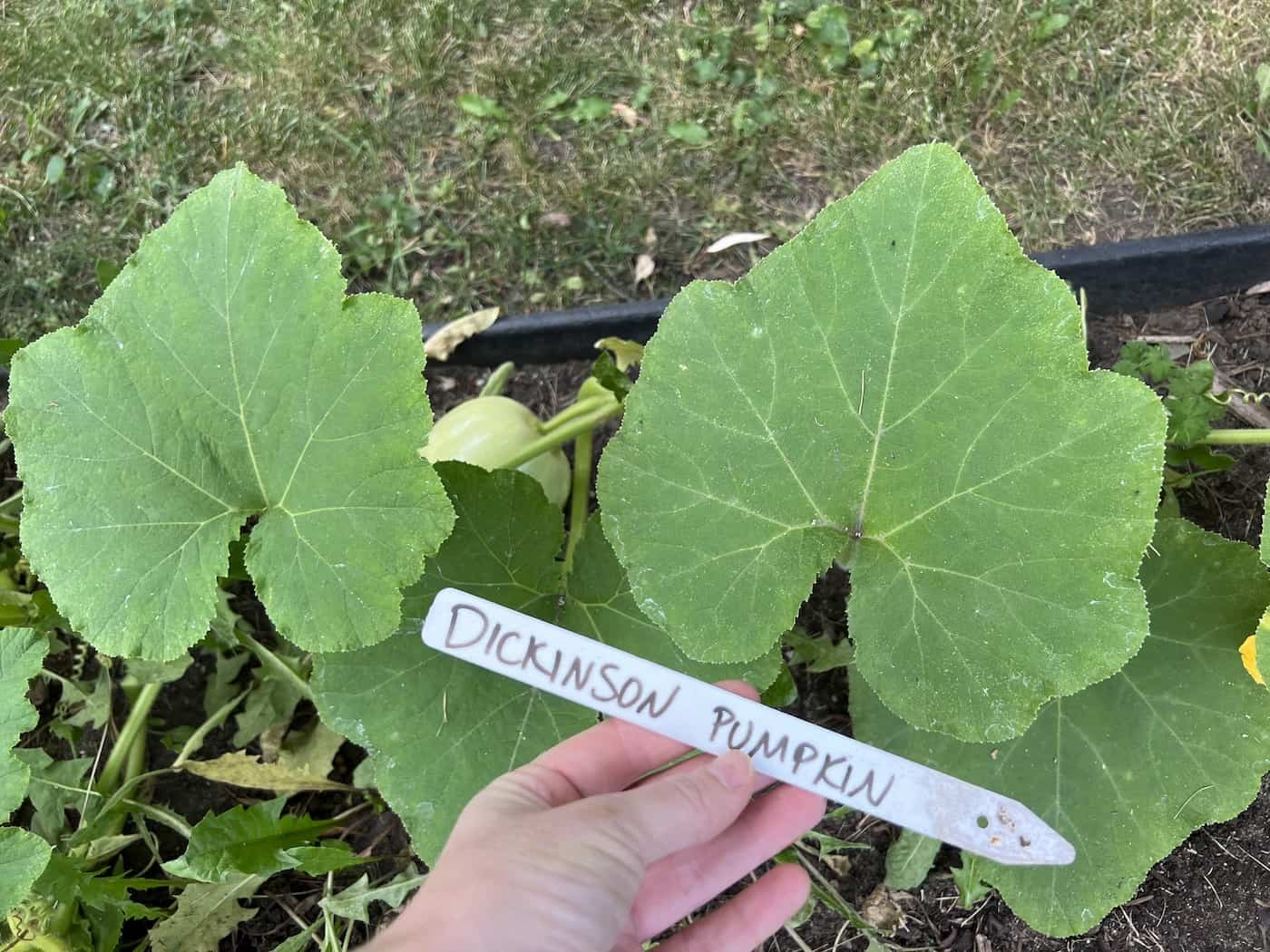
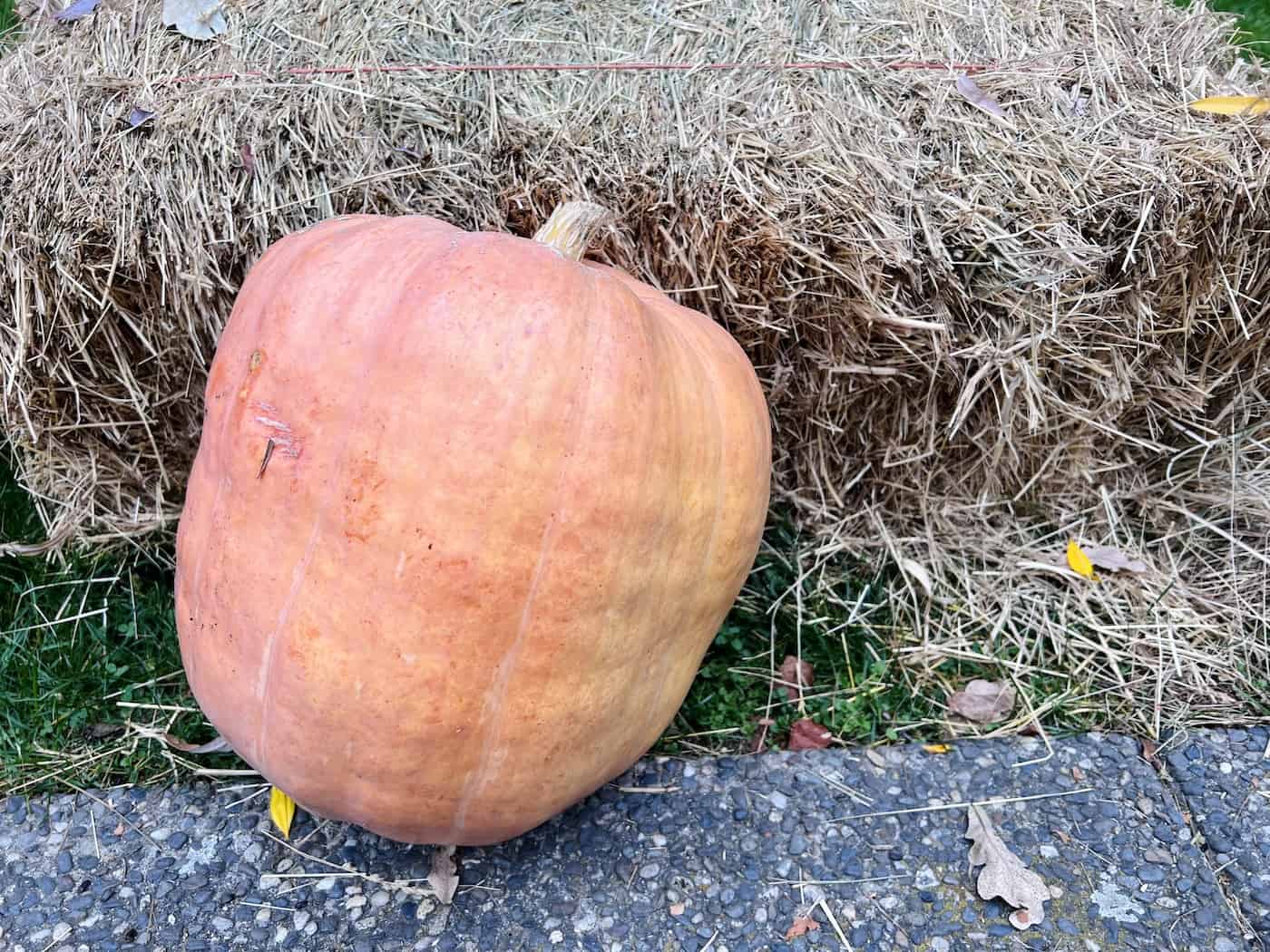
Dickinson pumpkins (Cucurbita moschata) are long/tall, smooth, and tan or sweet orange in color. They sometimes have ridges, although these are not very apparent until the pumpkin grows to be a large size. These pumpkins are often grown in Illinois, although they can grow in any area that has enough water and average temperatures that are over 70 degrees Fahrenheit.
They typically grow to be 10-14 pounds, although they can grow to be up to 40 pounds if they are given enough nutrients and time to grow. They are old enough to be classified as heirloom pumpkins. They are considered a close relative of the butternut squash (which also has a similar pale orange rind color and elongated shape.)
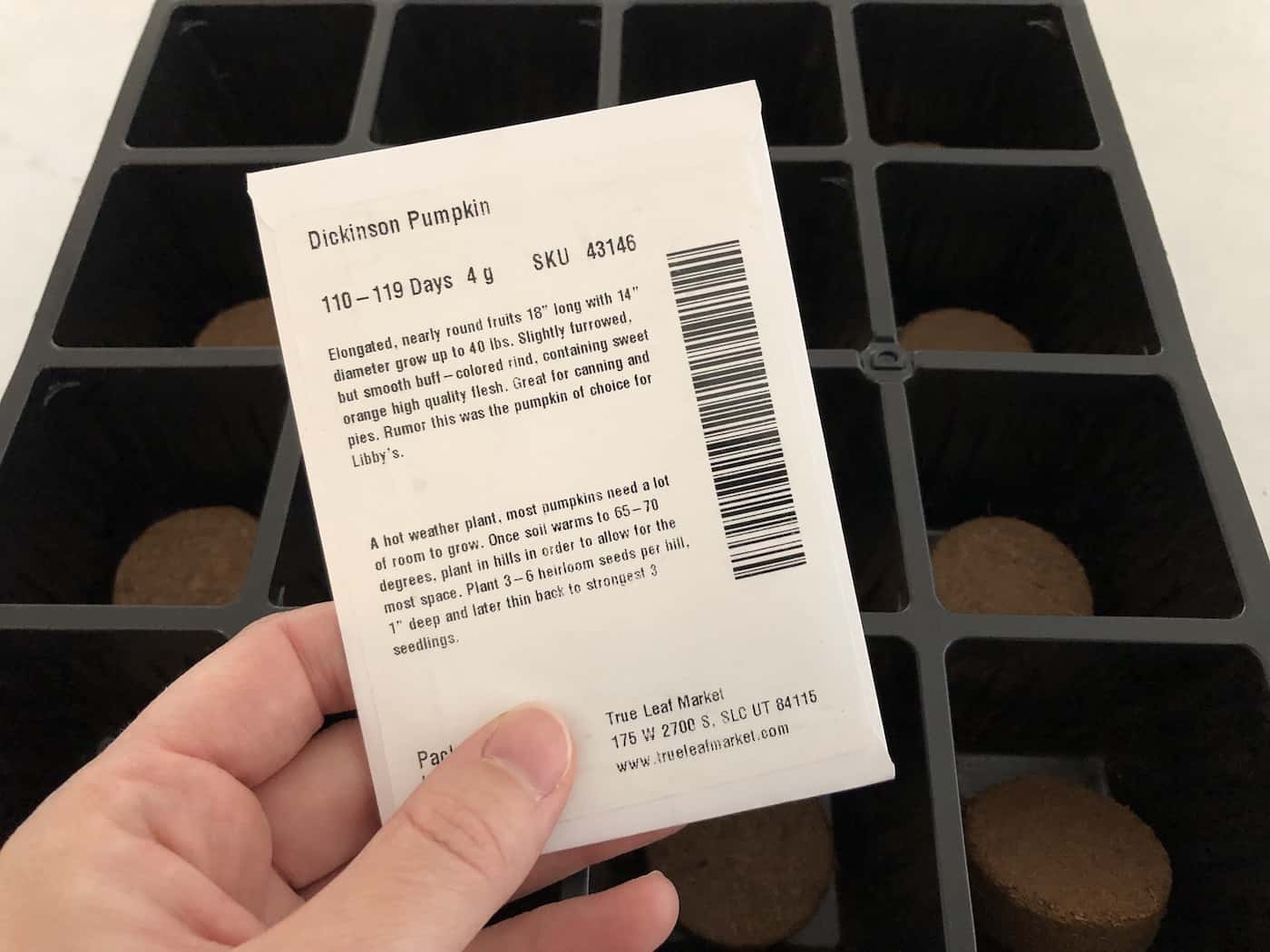
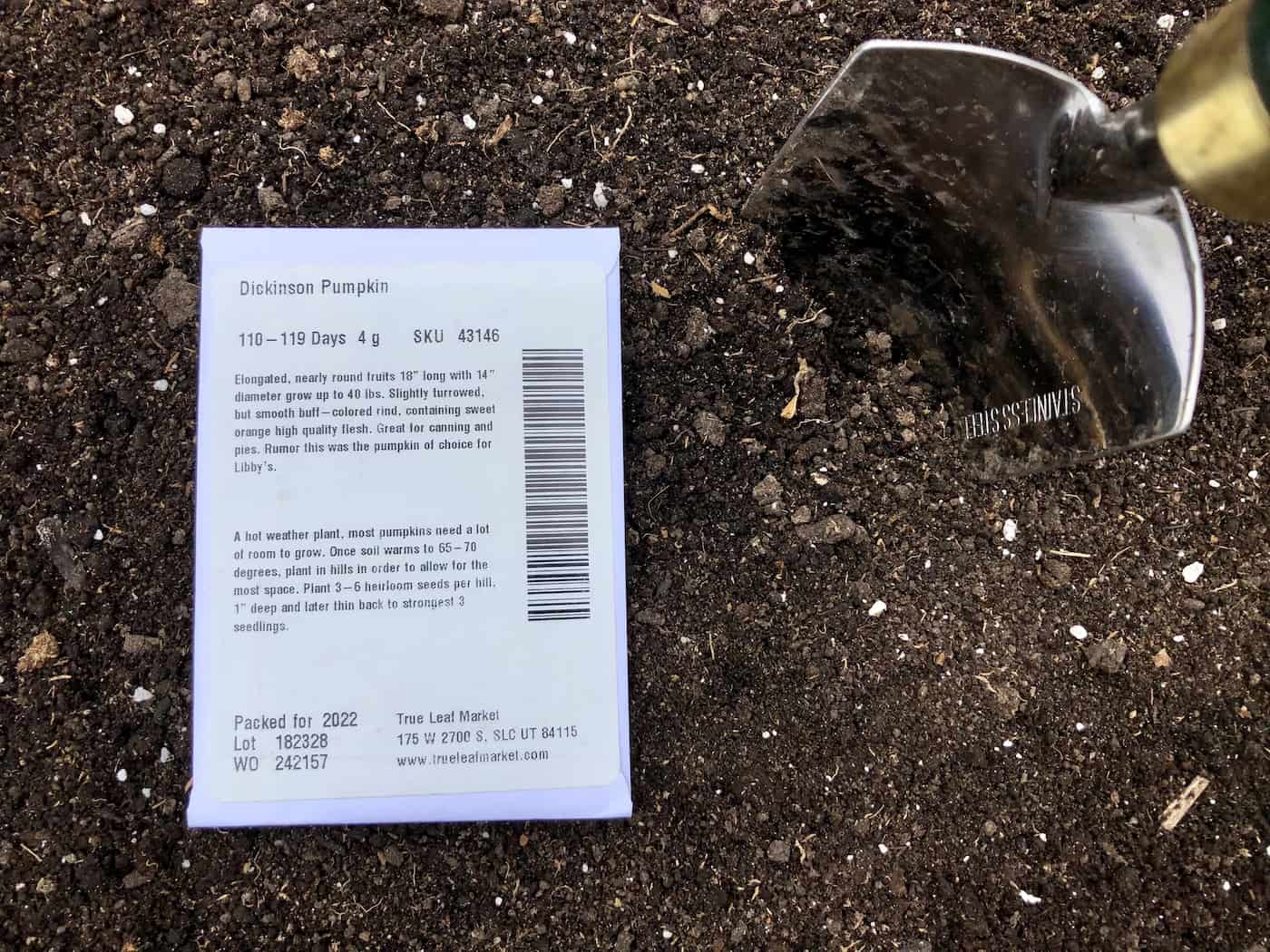
Growing Dickinson pumpkins
To grow Dickinson pumpkins, the most difficult part is usually finding the seeds! I bought my Dickinson Pumpkin seeds this year from True Leaf Market (here are the exact seeds I used).
The steps for growing this variety are much like growing any variety of pumpkin. Plant them in an area with nutrient-rich soil, plenty of sun, average temperatures over 70 degrees, and plenty of water. These pumpkins thrive in heat, although they may not grow very well in temperatures over 100 degrees.
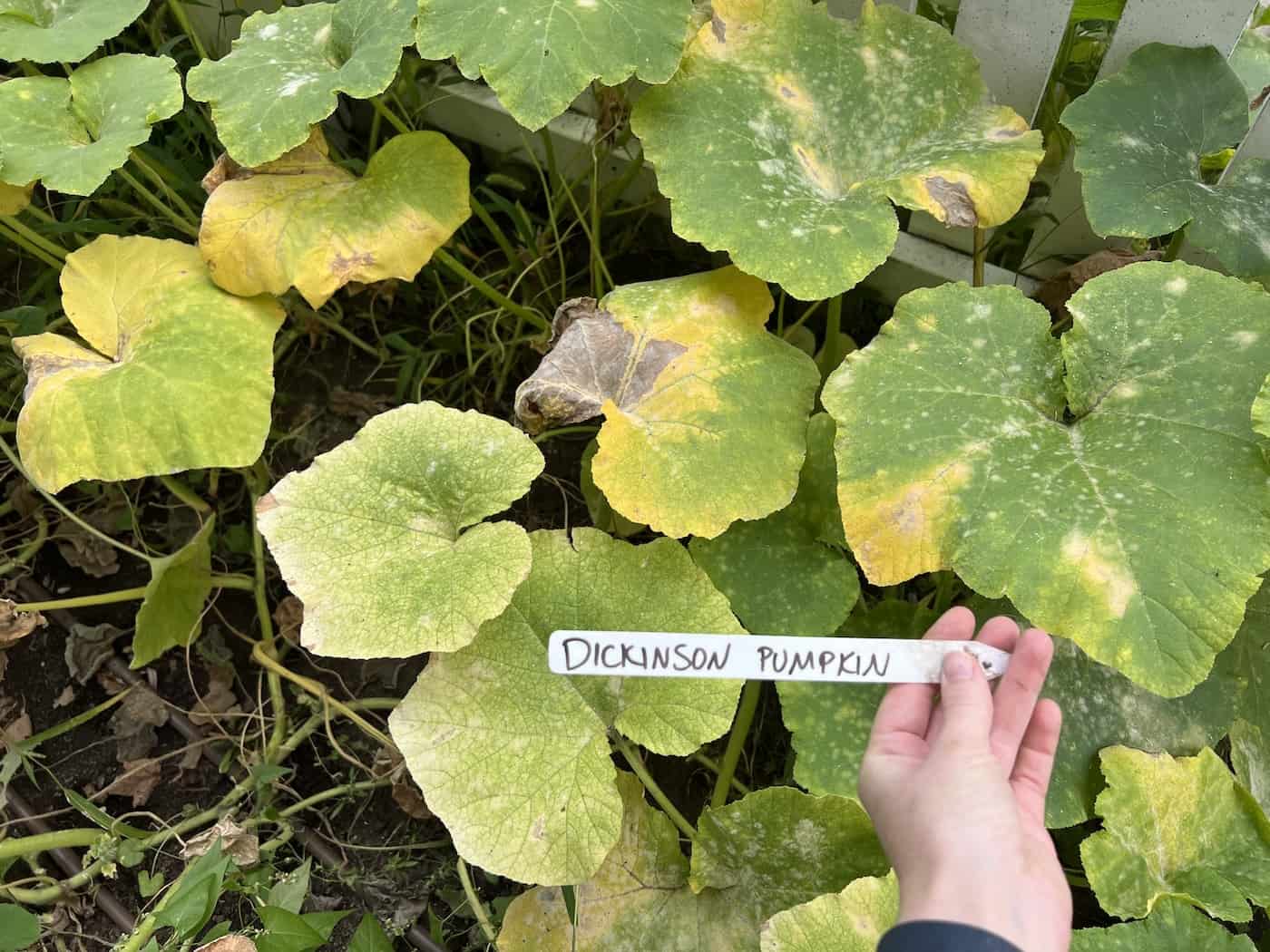
They are generally resistant to common pests and bugs, such as the squash vine borer, a moth that often plagues other pumpkin varieties. That said, this heirloom variety may not be as resistant to common diseases and pests that afflict squash family plants. But what these plants lack in hybrid vigor, they more than make up for in culinary flavor!
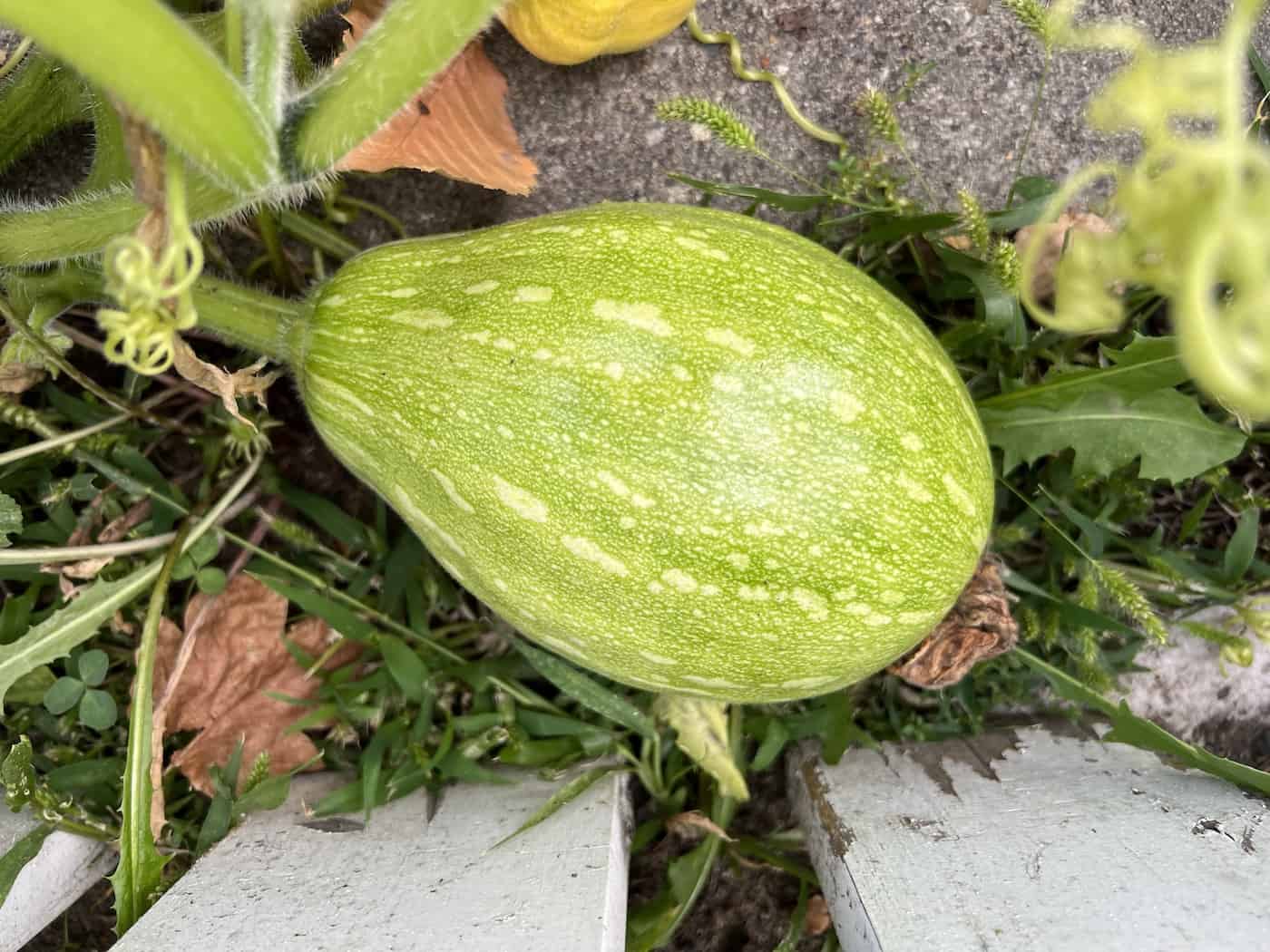
How long does it take for Dickinson pumpkins to grow?
After the sprouts emerge from the ground, Dickinson pumpkins take 100-115 days to grow fully. It only takes 7-10 days for the sprouts to emerge from the ground, so you will not have to wait very long to see the results of the pumpkin seeds you have planted.
Don’t take the pumpkin off of the vine until the vine starts to dry up and wither. When the vine starts to die, the pumpkin has stopped absorbing nutrients and growing and is ready to eat. However, if the vine seems still alive and thriving, you should wait a few days or weeks until it starts to die back.
Additional Reading: How Long Do Pumpkins Last
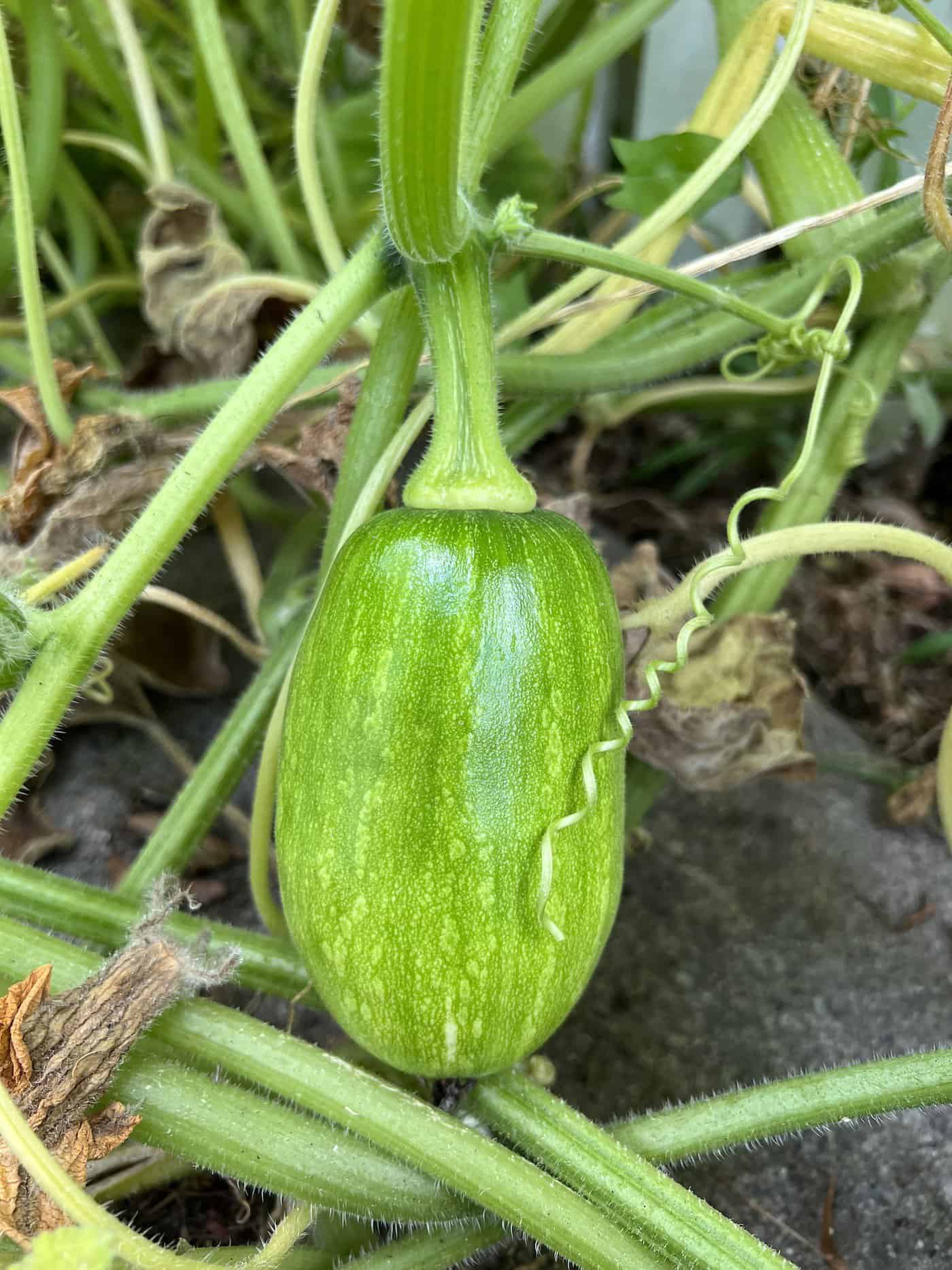
How are Dickinson and carving pumpkins different?
Dickinson pumpkins and carving pumpkins are very different in color, shape, density, and size. Dickinson pumpkins are long, tan, medium to large in size, and smooth, while carving pumpkins are orange, have many bumps and grooves, are round, and can grow to be very large.
Dickinson pumpkins are very dense while carving pumpkins can be somewhat hollow. Carving pumpkins have very stringy flesh inside of them, and the pumpkin seeds tend to hang onto the flesh. Dickinson pumpkins are not hollow, do not have stringy flesh, and the seeds can be found in the base of the pumpkin rather than attached to the flesh. Dickinson pumpkins also typically have fewer seeds compared to carving pumpkins. However, the seeds of Dickinson pumpkins and carving pumpkins look very similar.
You can’t carve Dickinson pumpkins very easily while carving pumpkins, which are grown and sold to be carved around Halloween. If you tried to carve a Dickinson pumpkin, you would have a very hard time as the outside of this pumpkin is not as sturdy as the outside of carving pumpkins (yet the walls are typically thicker than carving pumpkins).
It is very hard to find Dickinson pumpkins for sale at the grocery store, while it is easy to find carving pumpkins for sale at the grocery store around Halloween. Dickinson pumpkins are hard to find for sale at the grocery store because of their size. Many people find them hard to cook with. They would rather purchase a squash, often a butternut squash, because they are easier to cut up and maneuver in the kitchen, especially for an inexperienced cook.
Dickinson pumpkins are different in shape than carving pumpkins. Dickinson pumpkins are tall/long and have a slightly rounded base while carving pumpkins are typically round. Carving pumpkins can grow to be very tall, but they typically grow to be round shape rather than long shape.


